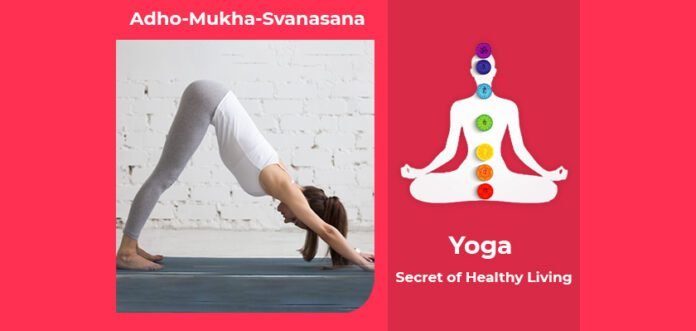What is Adho Mukha Svanasan
Adho Mukha Svanasan This asana is one of the most widely recognized yoga asana, This stretching asana gives new energy to the body.
- Downward-facing dog is an ancient posture depicted in Egyptian Art that is thousands of years old.
- It teaches us that how everything is connected; how our heels are linked to our shoulders, how fingers influence heart, how our elbow placement effects the spine.
Also Know as: Downward-Facing Dog Posture, headstand pose, downward facing tree, Adho Mukh Sav Asan, Savasana, Shavasana
How to start this Asana
- Come to your hands and knees with the wrists underneath the shoulders and the knees underneath the hips.
- Curl the toes under and push back raising the hips and straightening the legs.
- Spread the fingers and bend down towards forward with putting weight on the fingertips.
- Bring both the arms towards downward and outer side by broadening the chest.
How to end this Asana
- Stay in this pose anywhere from 1 to 3 minutes.
- Then bend your knees to the floor with an exhalation and rest in Advasana.
Video Tutorial
Benefits of Adho Mukha Svanasan
According to research, this Asana is helpful as per below(YR/1)
- Calms the brain and helps relieve stress and mild depression.
- Energizes the body.
- This postion stretches muscles of shoulders, back side of the thigh and leg, arches of the foot and hand.
- Strengthens the arms and legs.
- Helps relieve the symptoms of menopause.
- Relieves menstrual discomfort when done with head supported.
Precaution to be taken before doing Adho Mukha Svanasan
As per several scientific studies, precautions need to be taken in diseases mentioned as per below(YR/2)
- Calms the brain and helps relieve stress and mild depression.
So, consult your doctor if you have any of the problem mentioned above.
Histroy and scientific base of Yoga
Due to the oral transmission of sacred writings and the secrecy of its teachings, yoga’s past is riddled with mystery and confusion. Early yoga literature were recorded on delicate palm leaves. So it was easily damaged, destroyed, or lost. Yoga’s origins may be dated back over 5,000 years. However other academics believe it could be as old as 10,000 years. Yoga’s lengthy and illustrious history may be split into four distinct periods of growth, practise, and invention.
- Pre Classical Yoga
- Classical Yoga
- Post Classical Yoga
- Modern Yoga
Yoga is a psychological science with philosophical overtones. Patanjali begins his Yoga method by instructing that the mind must be regulated – Yogahs-chitta-vritti-nirodhah. Patanjali does not delve into the intellectual underpinnings of the need to regulate one’s mind, which are found in Samkhya and Vedanta. Yoga, he continues, is the regulation of the mind, the constraint of the thought-stuff. Yoga is a science based on personal experience. The most essential advantage of yoga is that it helps us to maintain a healthy bodily and mental state.
Yoga can help to slow down the ageing process. Since aging starts mostly by autointoxication or self-poisoning. So, we can considerably limit the catabolic process of cell degeneration by keeping the body clean, flexible, and properly lubricated. Yogasanas, pranayama, and meditation must all be combined to reap the full advantages of yoga.
SUMMARY
Adho Mukha Svanasan is helpful in increase flexibility of muscles, improves shape of the body, reduce mental stress, as well improves overall health.




